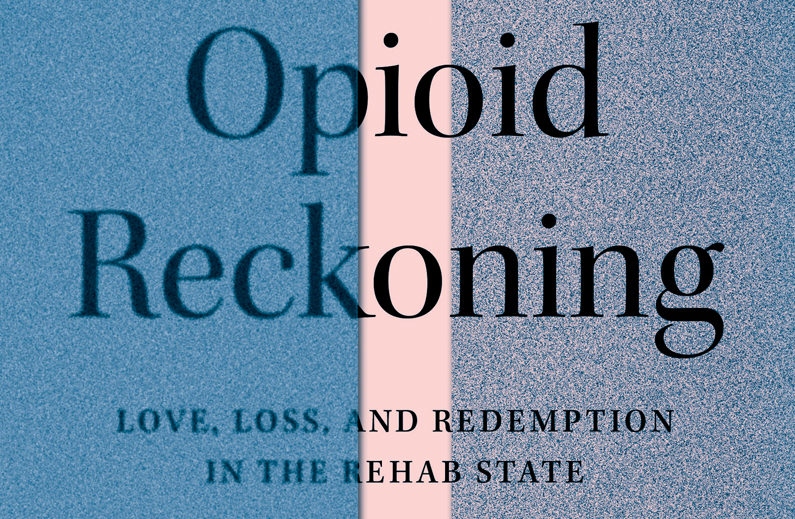Language around addiction has changed so quickly in the past few years that Rose decided to change the name of her organization from Our Young Addicts to OYA to take the focus off the word “addict.”
When she first came up with the name, her intention was to claim the word “addict” in an effort to destigmatize it and detach negativity from the word by acknowledging that all people with substance use disorders are someone’s child. Rose wanted her website to be a place where everyone felt welcome and to continue to be a relevant support resource for families, so she adapted the name to simply OYA.
After experiencing ongoing struggles, parents who continued to help their child were frequently told to not let them come home, to cut off all resources, and to detach. Sometimes the phrase “with love” was added.
When applied to families experiencing a loved one with an opioid addiction, this kind of thinking has had devastating, unintended consequences. Many treatment centers have family programs and support groups for loved ones where parents struggle to accept the well-worn truisms—practice “tough love,” “detach with love,” “cut the addict out of your life,” and other “letting go” maxims of pop psychology.
If parents did eventually follow some of this advice, it was usually only after having been broken down to the point of depletion, feeling they had no other choice. Ongoing emotional and physical exhaustion often set the stage for such actions. While it might initially sound reasonable for parents to set an obvious boundary of, “If you use drugs in our house, you have to leave,” following through on this advice when opioids were involved had their child’s possible death attached as a consequence.
The concept of rock bottom was meant initially to help people who might be on their way toward severe alcoholism.
The advice to “detach and let go” was often directly connected to another common trope: The addicted loved ones just needed to “hit rock bottom,” and then surely they would stop using. An explanation of what it meant to hit bottom was addressed in the famous Alcoholics Anonymous text known as The Big Book. “Why all this insistence that every AA must hit bottom first? The answer is that few people will sincerely try to practice the AA program unless they have hit bottom.”
Once AA had become better known nationally between the first printing in 1939 and its subsequent editions, the organization realized the need to “raise the bottom” for others whose drinking had not yet become so problematic as to destroy their lives.
By sharing their own drinking histories, they could map what they saw as its inevitable course toward more severe consequences. The concept of rock bottom was meant initially to help people who might be on their way toward severe alcoholism, a scared-straight kind of notion that might help someone become aware of the deteriorating, progressive nature of their disease before it is too late.
“Following every spree, he would say to himself, ‘Maybe those AAs were right …’ After a few such experiences, often years before the onset of extreme difficulties, he would return to us convinced. He had hit bottom as truly as any of us.”
Referencing the alcoholic’s drug of choice, they argue, “John Barleycorn had become our best advocate.” This tied in with another common phrase used in Twelve Step programs: a person’s addiction had to “run its course.” But with pain pills, stronger heroin and now fentanyl, a sudden death by overdose can often occur well before someone has even realized the aggressive power of their addiction.
Janie didn’t care how much time it took for him to heal; she was committed to helping him.
For many of the mothers I interviewed, “hitting rock bottom” was anathema and a sorry excuse to stop helping when all else continued to fail those suffering from opioid addiction. For Janie Colford, waiting for her son’s rock bottom was not an option she was willing to entertain. While living off and on at home, trying to go to college, relapsing and trying both treatment and medication, by age 26 he had been in treatment 11 times. Janie didn’t care how much time it took for him to heal; she was committed to helping him.
When her sister lost her son to a heroin overdose, the tragedy galvanized for Janie what had just been a hunch before her nephew’s death. “I believe that rock bottom is death, and why would you wait until that happened? I know that that’s not what other people believe and that’s fine. To me, I’ll do what I need to do to convince him to get treatment if I think things are out of control, or when things [do] get out of control.”
Janie Colford was a longtime board member and volunteer at the Steve Rummler Hope Network, the organization where I first learned about Narcan but not about the history of harm reduction. I realized later that this is akin to learning about condoms but not knowing the term “safe sex.”
Nevertheless, the mix of Minnesota Model treatment, medications for opioid cravings, access to Narcan and outreach to other families characterized what she and many other mothers juggled with their children.
Leveraging their interpersonal skills and professional networks to decrease overdose deaths by changing laws was the next step.
Photograph courtesy of Amy C. Sullivan
This article is excerpted from OPIOID RECKONING: Love, Loss, and Redemption in the Rehab State by Amy C. Sullivan. Copyright @ Amy C. Sullivan, 2021. Published by arrangement with the University of Minnesota Press.





Show Comments